8 Best Art Therapy Exercises For Grief Recovery
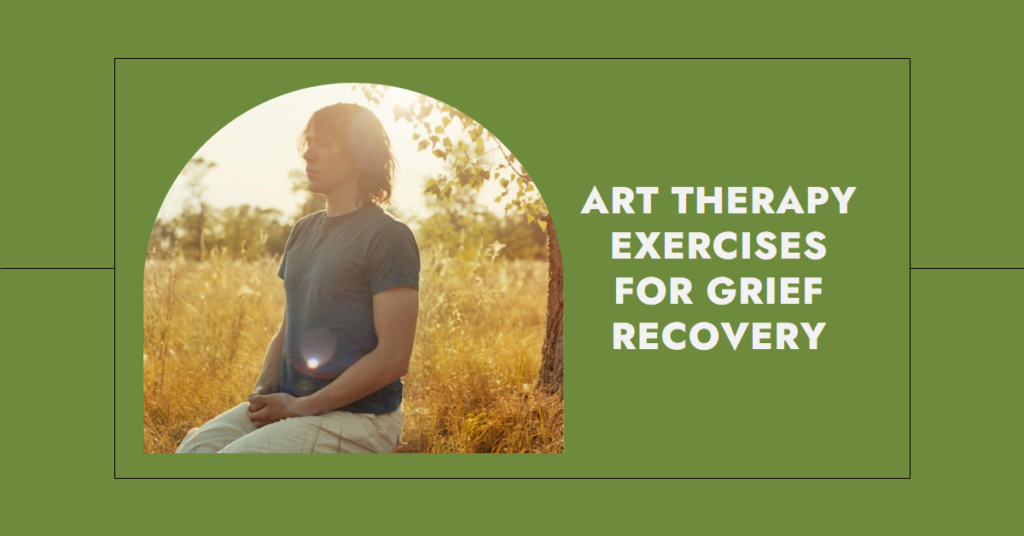
Table of Contents
- Role of Art Therapy in Grief Recovery
- Embracing Emotions with Color: The Color Wheel of Feelings
- Crafting Personal Healing Spaces with Collage Making
- The Mandala Journey: Symmetry and Serenity in Grief
- Sculpting Sorrow: Clay Work for Tactile Expression
- Writing Without Words: Expressive Scribble Drawings
- Constructing Hope: Memory Boxes and Assemblage Art
- The Path of Patterns: Zentangles and Relaxation
- Nature’s Embrace: Incorporating Natural Elements in Art
- Concluding Thoughts: Integrating Art Therapy into Your Healing Process
Role of Art Therapy in Grief Recovery
Grief is a complex emotional journey that can often feel overwhelming and isolating. Art therapy, a form of expressive therapy that uses the creative process of art-making to improve physical, mental, and emotional well-being, has been increasingly recognized as a powerful tool for navigating the choppy waters of loss and bereavement. Through the lens of holistic health, Scholistico’s Art Therapy Practitioner Certification Course seeks to empower individuals by providing them with the skills needed to harness the healing capabilities of art.
The Power of Art in Healing
At the heart of art therapy lies the belief that artistic expression can engender healing and mental well-being. It is particularly effective for those who might find traditional talk therapy limiting or challenging. Art therapy provides an alternative route, allowing emotions to be processed in a non-verbal, yet impactful way.
Applicability of Art Therapy for Grief
Grief can manifest in various forms and can affect each individual differently. The use of art therapy offers a personal and unique approach to coping with these feelings. It invites an individual to create and reflect on the artwork as a means to explore their emotions, reconcile emotional conflicts, foster self-awareness, manage behavior and addictions, develop social skills, reduce anxiety, and increase self-esteem.
- Self-Expression: Art provides a safe space for the expression of suppressed emotions and thoughts.
- Reflection: Art-making encourages a moment of mindfulness, compelling individuals to reflect on their inner state.
- Communication: For those who find verbal expression difficult, art becomes a language without words.
- Catharsis: The act of creating art can be cathartic, helping to release intense or pent-up emotions.
Embracing Emotions with Color: The Color Wheel of Feelings
The Color Wheel of Feelings is an immersive exercise that uses the rich language of colors to explore and articulate deep-seated emotions associated with grief. Scholistico’s Art therapy courses often highlight how colors can correspond to feelings and can help convey what words sometimes cannot.
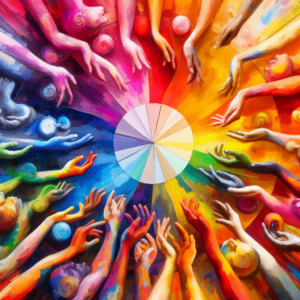
In this exercise, you’re encouraged to select colors that resonate with your current emotional state. Whether it’s the somber blues and greys of sadness, the turbulent purples of confusion, or the hopeful yellows of brighter days ahead, the color wheel becomes a guide to understanding your inner world.
How to Create Your Color Wheel of Feelings
Begin with a blank canvas and divide it into sections—each representing a different emotion. Within these sections, you will fill in with the color you feel represents that feeling best. This is a deeply personal process, and there is no right or wrong color choice. It is about what feels true for you.
The Benefits of Color Psychology
An important aspect of art therapy, and a focal point in Scholistico’s holistic health approach, is the understanding of how different colors can affect mind and body. Color psychology provides insight into how colors can influence your mood and behavior, and this exercise can be a stepping stone into greater self-awareness and emotional healing.
- Self-Discovery: Exploring the colors can lead to surprising revelations about hidden emotional states.
- Emotional Literacy: The color wheel helps in building a more nuanced vocabulary for your emotions.
- Mindfulness: As you focus on choosing and applying color, the activity brings you into a mindful state, drawing you away from stressful thoughts.
Embrace the cathartic release that comes from recognizing and expressing your emotions through color in this empowering art therapy exercise. It is not just an activity; it is a step forward in your journey toward healing.
Crafting Personal Healing Spaces with Collage Making
Crafting a collage can be likened to curating a sanctuary where each piece embodies a fragment of one’s journey through grief. Scholistico recognizes that the process of selecting, cutting, and positioning materials is, in fact, an intimate dance with one’s emotions during tough times.
This artistic endeavor does not demand high levels of skill, making it accessible to all, thus aligning with Scholistico’s inclusive approach to holistic wellness education. A collage can act as a visual diary, capturing moments of pain, hope, reminiscence, and resilience.
Create and Reflect
Gather various materials – photographs that evoke memories, magazine cutouts that speak to your soul, bits of fabric or nature that offer comfort. Assemble these elements on a canvas or board, letting intuition guide your arrangement.
Engage with the pieces, contemplate their significance, and anchor them to your space. The act of creating a collage is both a narrative and a builder of new paths, resonating deeply with Scholistico’s ethos of personal development and transformation.
Therapeutic Benefits
A collage can serve as a frozen frame of one’s healing process, a testament to the individual’s ongoing narrative of grief. It validates personal experiences and encourages a dialogue with oneself and others about the journey of recovery.
- Memory Preservation: Collage making enables the preservation of important memories, serving as a gentle reminder that while our loved ones may be gone, their essence remains with us.
- Visions of Future: By incorporating hopeful imagery, a collage can become a vision board of sorts, pointing towards a future filled with healing and growth.
The Mandala Journey: Symmetry and Serenity in Grief
Mandalas, representing the universe and self in Hinduism and Buddhism, have been embraced by Scholistico for their therapeutic properties in the realm of art therapy. Creating a mandala involves a reflective and meditative process that can help individuals coping with grief find a sense of balance and calmness.
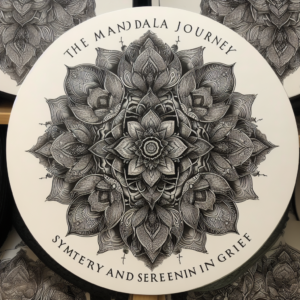
Crafting Your Mandala
To begin, one simply needs a compass, paper, and some colored pencils or markers. However, the true essence of this exercise lies in letting go and allowing one’s inner self to guide the symmetrical patterns that unfold.
The circular motif of the mandala represents wholeness and continuity. As you draw concentric shapes and fill them with patterns and colors, you are inviting a dialogue between your conscious and subconscious mind, opening up pathways to deeper understanding and acceptance of your loss.
Mandalas and Mindfulness
The repetitive motion of drawing and coloring intricate designs demands focus, which can help to anchor you in the present moment. This mindfulness aspect is crucial for individuals who are overcome by the weight of their grief and seeking respite from the turmoil of their emotions.
Scholistico’s art therapy courses emphasize the transformative power of mandala creation, not only as a form of artistic expression but as a tool for personal centering and emotional recovery.
Sculpting Sorrow: Clay Work for Tactile Expression
The tactile nature of clay makes it a potent medium for expressing and shaping the heavy feelings of grief. Scholistico advocates for the therapeutic potential of hands-on activities such as clay work in its holistic health curriculum.
In molding clay, individuals find a physical outlet for their internalized emotions, often resulting in profound somatic relief and a deeper connection to the grieving process.
The Process of Clay Therapy
Without the need for words, participants are encouraged to channel their feelings of loss into their creations. This might manifest as abstract shapes or perhaps more defined figures that have personal resonance. The malleable nature of clay allows for constant change, symbolizing the fluidity of the grief journey and the transformative path of healing.
Healing through Clay Work
The act of kneading and sculpting clay can be grounding, as it requires awareness of one’s physical presence and can divert the mind from persistent cycles of grief. Scholistico understands the value of this ‘earthy’ connection as part of a holistic approach to wellness.
The finished piece, whether intentionally formed or an abstract expression, serves as a tactile testament to the individual’s personal experience with grief, affording a unique narrative to their process of bereavement and recovery.
Writing Without Words: Expressive Scribble Drawings
Expressive scribble drawings are a foundational exercise in art therapy, offering a way to release intense emotions through unpremeditated scribbling. This method, highlighted in Scholistico’s course curriculum, bypasses the conscious mind and taps directly into raw feelings, making it particularly effective for individuals grappling with grief.
| Exercise | Materials Needed | Emotional Focus |
|---|---|---|
| Color Wheel of Feelings | Paint, Colored Pencils, Paper | Understanding and expressing emotions |
| Collage Making | Magazines, Scissors, Glue, Canvas | Creating personal healing spaces |
| Mandala Drawing | Colored Pencils, Compass, Paper | Finding symmetry and serenity |
| Clay Work | Clay, Modelling Tools | Tactile expression of sorrow |
| Expressive Scribble Drawings | Paper, Pens or Markers | Releasing suppressed emotions |
| Memory Boxes and Assemblage Art | Box, Keepsakes, Decorative Items | Constructing hope and preserving memories |
| Zentangle Drawing | Square Paper Tiles, Fine Point Pen | Meditation and relaxation |
| Nature Art | Natural Elements (Leaves, Stones, Flowers), Paper | Connecting with nature and grounding |
Releasing Emotions on Paper
The process involves grabbing a drawing instrument, closing your eyes, and letting your hand move freely across the page. There’s no expectation of creating recognizable images. Instead, the movement, pressure, and speed of your scribbles are an external representation of your internal emotional state.
After scribbling, you can reflect on the created patterns and even find shapes or images within the chaos, assigning meaning or narratives that resonate with your current feelings of loss and hope.
Discovering Meaning in Abstraction
Often in grief, words fail to encapsulate the depths of sorrow. Scribble drawings provide a silent language for such indescribable emotions. It’s a liberating and often surprising journey to visually converse with one’s psyche, which can reveal underlying layers of grief and pathways to healing.
This exercise aligns with the values of Scholistico, promoting the idea that personal growth and emotional healing are within reach for their audience of mature, educated, and holistic-minded women.
Constructing Hope: Memory Boxes and Assemblage Art
Creating a Memory Box
The process begins with choosing a box that resonates with you—perhaps it’s one you already own or one you create. This box will serve as a repository for items that hold significant emotional value; tokens, trinkets, photos, or letters that are evocative of the person or experience being mourned.
Decorate and personalize the exterior to reflect the essence of what’s inside. The act of assembling and arranging these items in your memory box can be a deliberate, mindful practice, offering solace and a tangible presence during times of reflection.
The Significance of Assemblage Art
Assemblage art builds upon the concept of memory boxes, expanding it to include larger, more varied mixed-media compositions. Such artworks integrate found objects, fabrics, and various materials that are layered and compiled to create a narrative tableau.
This artistic technique is especially profound for expressing the complexities and layers of grief. It allows for a dynamic exploration of feelings, embodying a sense of active engagement and reconstruction — key themes within the holistic approach Scholistico embodies.
The Path of Patterns: Zentangles and Relaxation
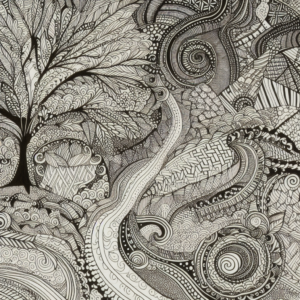
Understanding Zentangle Art
The Zentangle Method is an easy-to-learn, relaxing, and fun way to create beautiful images by drawing structured patterns. It doesn’t require any artistic background, making it accessible for all who seek solace and expression through art. The inherent simplicity and repetitive nature of the patterns facilitate a Zen-like state that can be deeply therapeutic.
Practicing Zentangle for Healing
As participants engage with each stroke, the outside world fades away, helping to alleviate the endless cycle of grief-related thoughts. The focus shifts to the present, where each line, curve, and dot serves a purpose. Scholistico’s holistic wellness courses recommend Zentangle art as an effective means to clear the mind and allow for a peaceful cognitive escape during periods of intense emotional stress.
The beauty of Zentangle lies in its spontaneity and the absence of anticipated outcomes, giving individuals the space to explore their emotions without judgment or expectation — a precious gift for those in the throes of mourning.
Nature’s Embrace: Incorporating Natural Elements in Art
Art therapy practices that incorporate elements from nature cater to Scholistico’s holistic approach, connecting individuals to the earth and its healing properties during times of grief. Incorporating natural materials can offer a unique sense of comfort and grounding that is deeply therapeutic.
Crafting with the Gifts of Nature
Creating art with natural elements like leaves, stones, branches, and flowers invites a sensory exploration that can alleviate the numbness often accompanying grief. These elements bring their own stories and energies, allowing for a deeply personal and resonant artistic expression.
- Leaf Prints – Using leaves to create patterns and pressing them onto paper to capture their intricate designs.
- Stone Balancing – Finding harmony and concentration in the delicate balance of stones stacked one atop the other.
- Flower Pressing – Preserving the transient beauty of flowers as a metaphor for treasured memories.
The Restorative Power of Art and Nature Combined
The meditative act of connecting with these natural elements and creating art can function as a non-verbal narrative, telling the story of one’s grief and recovery. The simplicity and unpredictability of working with nature’s offerings foster a sense of acceptance and release.
Engaging with nature through art not only nurtures creative growth but also promotes emotional healing, encapsulating the core values that Scholistico imparts to its community of learners and healers.
Concluding Thoughts: Integrating Art Therapy into Your Healing Process
As we reach the conclusion of our exploration of art therapy techniques for grief recovery, it is evident that art can serve as a powerful catalyst for emotional healing. Scholistico champions the integration of these practices into daily life, acknowledging the transformative effect they can have on those seeking comfort and understanding in their grief journey.
Personalizing Your Art Therapy Journey
Each person’s path through grief is unique, and so too should be their approach to art therapy. It is important to experiment with different mediums and exercises, like those covered in our previous sections, to discover which resonate most deeply with you and facilitate your personal healing.
Continuing Education and Growth with Scholistico
For those who have found solace in the exercises discussed, Scholistico offers a wealth of resources for further personal and professional development. From certification courses to informative books, there is a continuous opportunity for growth, learning, and healing within the community.
| Title | Theme | Best For |
|---|---|---|
| 50+ Art Therapy Exercises for Children, Adults, and Seniors | Art Therapy Practice | Art Therapists, Educators, Caregivers |
| 50+ Natural Home Remedies | Natural Healing and Wellness | Practitioners, Homeopathic Enthusiasts |
Titles such as “50+ Art Therapy Exercises for Children, Adults, and Seniors” provide additional guidance for those wishing to delve deeper into the practice of art therapy, whether for themselves or to aid others.
Embracing Holistic Healing as a Way of Life
In embracing these creative practices, you are not only navigating your grief but also adopting a holistic approach to life that nurtures body, mind, and spirit. Scholistico is dedicated to supporting you in this journey, offering tools, knowledge, and a like-minded community that values wellness in all its forms.
We invite you to explore the various art therapy exercises detailed in this article and to consider the comprehensive programs that Scholistico provides. May your journey through art lead you to healing, peace, and a renewed sense of purpose.

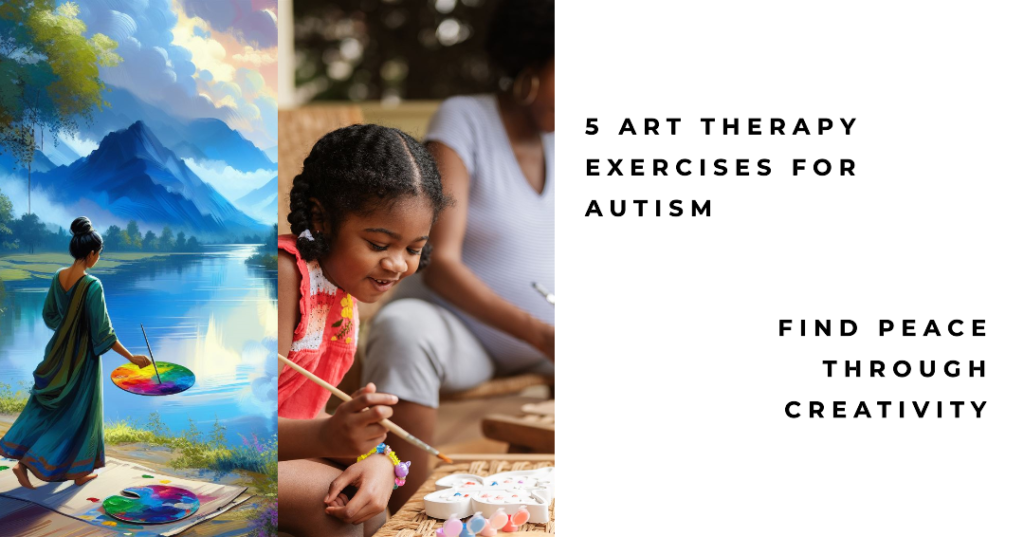
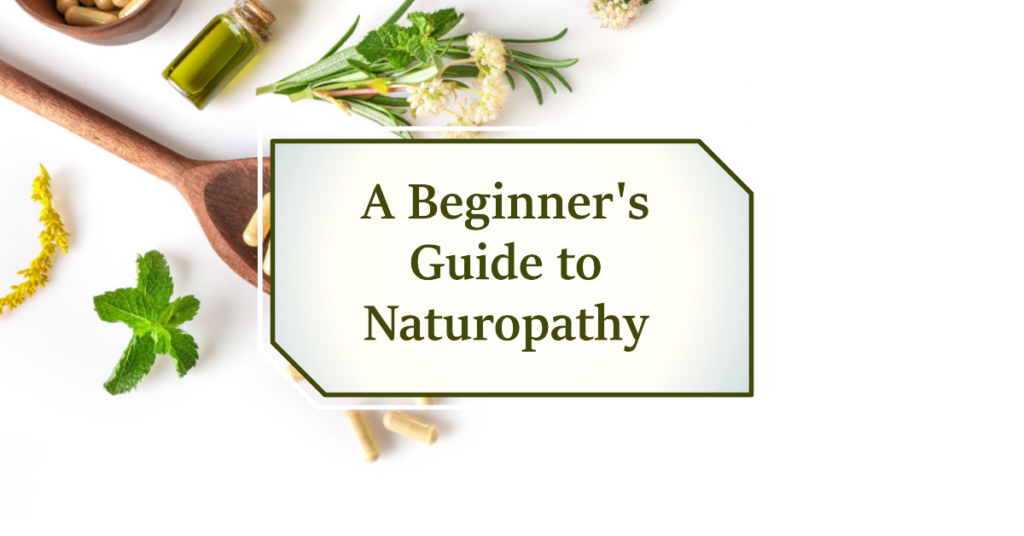
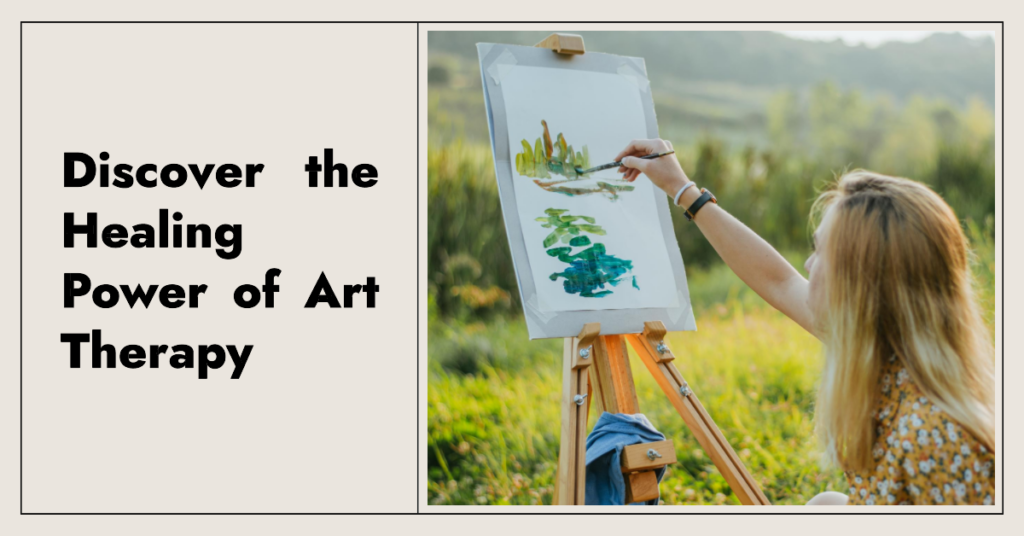
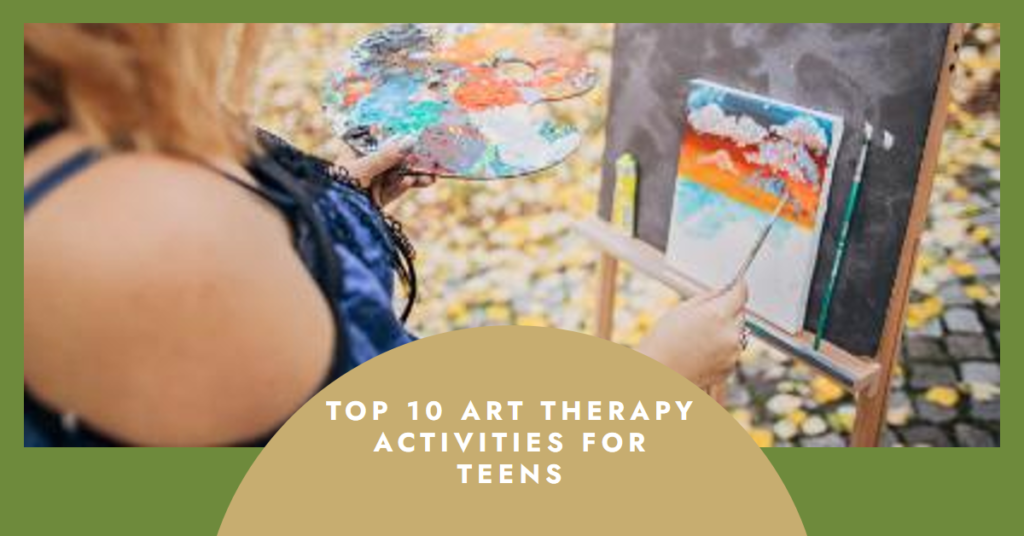
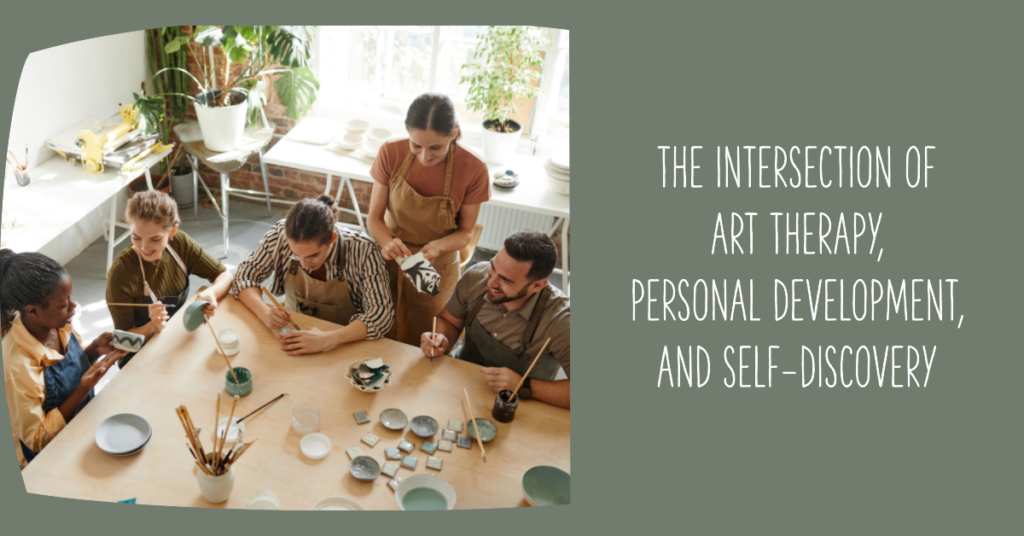




[…] personifying intangible emotions onto canvas, paper, clay, or any preferred medium. Our guide on 8 Best Art Therapy Exercises For Grief Recovery delineates the potential of art therapy in ameliorating the heavy burdens of […]